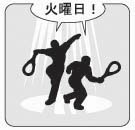
When it comes to choosing which bank to apply to in Japan there isn’t much in it. Most banks are pretty indistinguishable from each other when it comes to services and interest rates, which usually are “expensive or non-existent” and “microscopic” respectively. Bank accounts, though, are very easy to open, even for foreigners, so there is little to worry about there. With a foreigner registration card (“gaijin card” in common parlance), maybe a passport as a back-up and a single 1 yen coin you could theoretically open an account anywhere. However, your choices are limited from a rather unexpected angle.
Once you become a full-time employee you will be asked (read:
required) to join the establishment your employer banks with. This is to minimise transfer fees and make the whole process easier and quicker for the employer. This was fine when long-term employment was a given in Japan but those days are drawing to a close, making job-hopping an incredibly annoying affair. Imagine having to change banks, transferring all your automated payments and credit card bills and getting new cards and PINs every time you change your job. As such it may be beneficial, if you’re moving to Japan with a job offer in hand, to ask your employer what bank he uses, in case you end up turning into a full-time employee. This will save you a lot of hassle later.
You may need to get yourself a “hanko”, a stamp with your name on, which acts as a signature for almost everything in Japan. These can usually be bought cheaply in 100 yen shops, but only for those with common Japanese names.
You will have to get one made specially at a hanko shop, in katakana, which will extrude gasps of awe and shrieks of “
suteki--!!!" from any Japanese person who sees it.
Bank books, which you have filled in by sticking them into ATMs and selecting the appropriate option, will have your name on it too, but as the machines that print them usually only deal with a maximum of 5 kanji names, don’t be surprised if your name gets cut off or, like mine, is written by hand on the cover.
Substantial loans, for, say, mortgages, will be a virtual impossibility until you become a permanent citizen or nationalised Japanese. Until then your request will simply be laughed at. Even small loans could be difficult and don’t be surprised if your account as no overdraft. That said, overdrafts in Japan seem to fall under the “loan” options, with them having you go through some application processes before being able to take out more than is in your account. If you’re in dire straights there are a few loan companies around but use them at your own peril; a few have already been closed down due to dubious practices, extortionate interests and mob connections.
A lot of foreigners also seem to complain about the impossibility of acquiring a credit card. Maybe this has changed in the last few years but I personally had no troubles at all. I suppose it helps if you’re a long-term resident, have a solid, long-term visa and full-time employment, but in my case it was simply the bank asking me if I wanted one and me saying, yeah, alright then, cheers. If you’re fresh off the plane with a one year visa it may not be so easy. Whereas in the west financial institutions are obscenely desperate to get you into debt with them, Japanese banks are still smarting from the collapse of the bubble some decades ago, and are desperate to get any loan repaid in full, as quickly as possible and unwilling to extend any loan to anyone who may possibly default on it; which includes those dirty foreigners who could just jump ship and sod off back home without paying their dues (which
does happen, apparently).
In return for such fastidiousness banks clamour for our patronage by plastering expensive idols over their marketing materials and dishing out very juicy interest rates, making themselves as attractive as possible with rates sometimes as high as
0.01%. Nothing is quite as painful as getting an interest payment of a few hundred yen on substantial savings. Banks in Japan really are just a place to store your cash, rather than a place to invest your money in.
On top of that they charge you for ATM withdrawals. On weekdays, during office hours, most ATMs are free, but any time after that some banks start charging for transactions. Maybe on salary days, traditionally the 25th of each month, the free hours are extended, but all in all you’re best off only getting your money out on lunch breaks, if you can stand the massive queues that suddenly form in front of them around 1 o’clock.
ATMs are otherwise fairly decent affairs, often with English language options. If your bank doesn’t have those kinds of machines, make sure to use them at branch offices where very helpful clerks will happily, if in somewhat faltering communication, talk you through the processes. Often the machines work both ways, allowing you to deposit money and coins in too, to pay bills. Some smaller ATM establishments get closed off with shutters late afternoons, though this tradition seems to be on its way out. Utility and phone bills can be paid at almost any convenience store anywhere, which is kind of handy.
Compared to their western, especially British counterparts the banks here look fairly welcoming in interior design. Usually there are no glass prisons for the tellers but a neat row of desks, a ticket machine and a series of comfortable sofas to wait on.
When it comes to spending, or any kind of transaction it seems cold hard cash is still the fashion.

Luckily Japan is still safe enough for you to walk about with a small fortune stuffed in your wallet, and people pay for all but the largest purchases with paper; using a credit card for any amount under, say, 30,000 Yen is an oddity, though I doubt anyone will take issue with it. And it is also perfectly acceptable to pay for a 100 Yen pack of beer flavoured candies with a 10,000 Yen note; you will
never be asked if you have anything smaller, and your change is given promptly and without fuss, unlike England where such an imposition is greeted with grumbling, cursing or downright refusal.








































